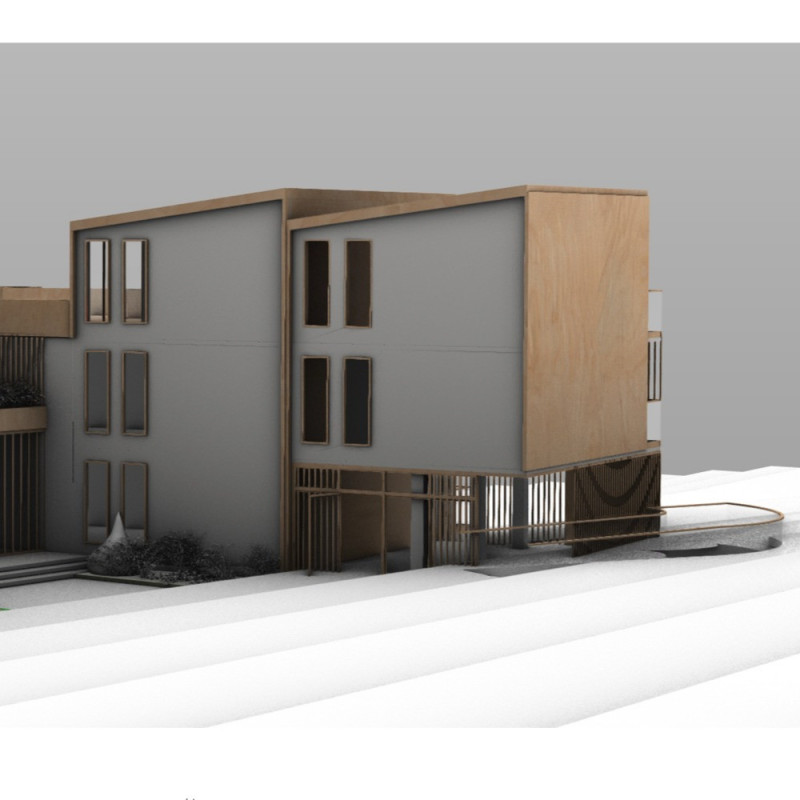5 key facts about this project
Functionally, the project serves as a residential complex designed to accommodate a diverse community. The layout encourages social interaction among residents while providing private spaces that promote tranquility and comfort. The architectural design emphasizes the importance of both communal areas and private units, ensuring that users have access to shared amenities without sacrificing their personal privacy. This careful consideration of spatial organization reflects a broader understanding of contemporary living, appealing to a range of lifestyles.
Key elements of the project include the integration of various materials that contribute to its overall aesthetic and functional qualities. The predominant use of wood for cladding and structural elements evokes a sense of warmth and connection to nature. This choice aligns with the project's ethos of promoting sustainability, as wood is a renewable resource that fosters a dialogue between the building and its context. Extensive use of glass plays an essential role in enhancing the relationship between indoor spaces and the landscape, allowing natural light to flood interiors while providing unobstructed views of the surrounding greenery.
Concrete serves as the backbone of the structure, providing stability and longevity. The combination of these materials facilitates a design that is not only durable but also visually appealing. Metal accents, such as railings and support structures, introduce a modern touch, contrasting with the organic warmth of wood and adding a layer of sophistication to the overall design.
The architectural layout consists of both common and private areas that promote a sense of community without compromising individual living experiences. On the first floor, shared spaces are incorporated to foster interaction among residents, featuring inviting communal lounges and dining areas that encourage gatherings. The second floor is designed with additional residential units that elevate living spaces while offering unparalleled views of the natural landscape. This two-tiered organization aligns with modern residential design trends and effectively responds to the needs of its users.
Unique design approaches are evident throughout the project. The integration of outdoor spaces is reimagined through terraces and balconies that seamlessly connect the indoors with the outdoors, promoting a lifestyle that appreciates nature. Overhangs provide essential shading, contributing to energy efficiency and enhancing comfort throughout different seasons. The varying textures and shapes of the building, characterized by a mixture of flat and sloped roofs, reflect the contours of the surrounding landscape, establishing a visual dialogue with the environment.
Overall, "Between Flowers and Trees" serves as a model for contemporary architecture that prioritizes sustainability, communal living, and the appreciation of nature. The thoughtful use of materials, innovative spatial organization, and integration with the landscape make this project a noteworthy contribution to modern residential design. Readers interested in delving deeper into the architectural plans, sections, and designs of this project are encouraged to explore the presentation further for a comprehensive understanding of the architectural ideas and the underlying concepts behind this impressive endeavor.























